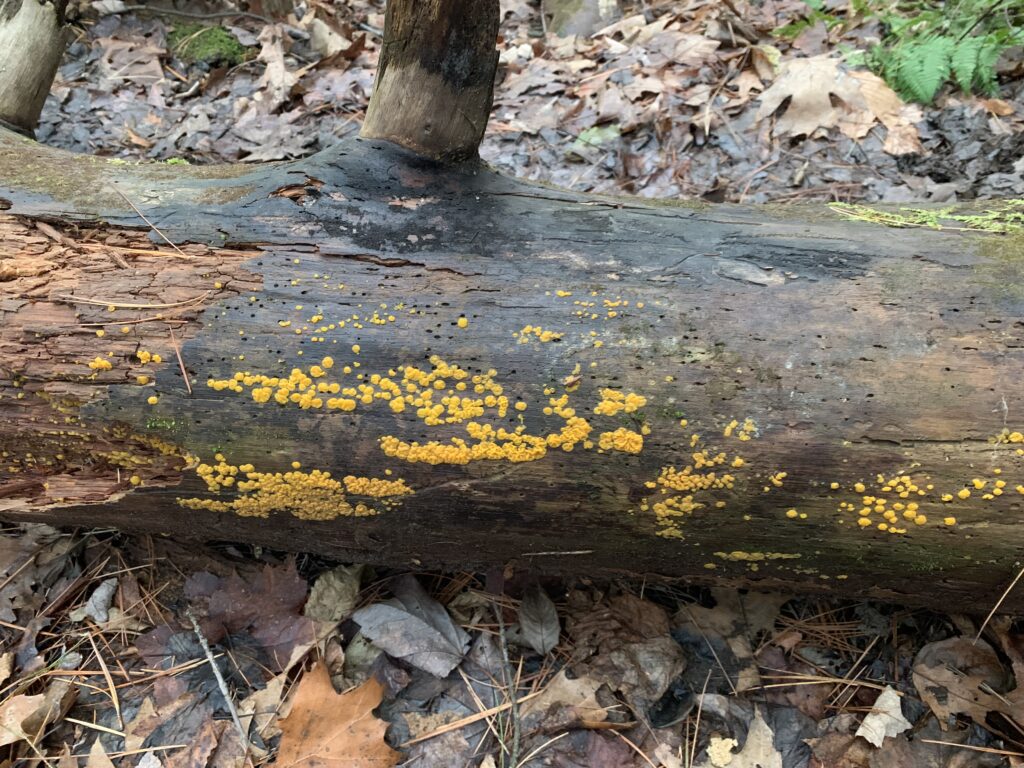With winter swiftly approaching, I made my last official visit to my phenology spot to observe the changes that have occurred in the past month.
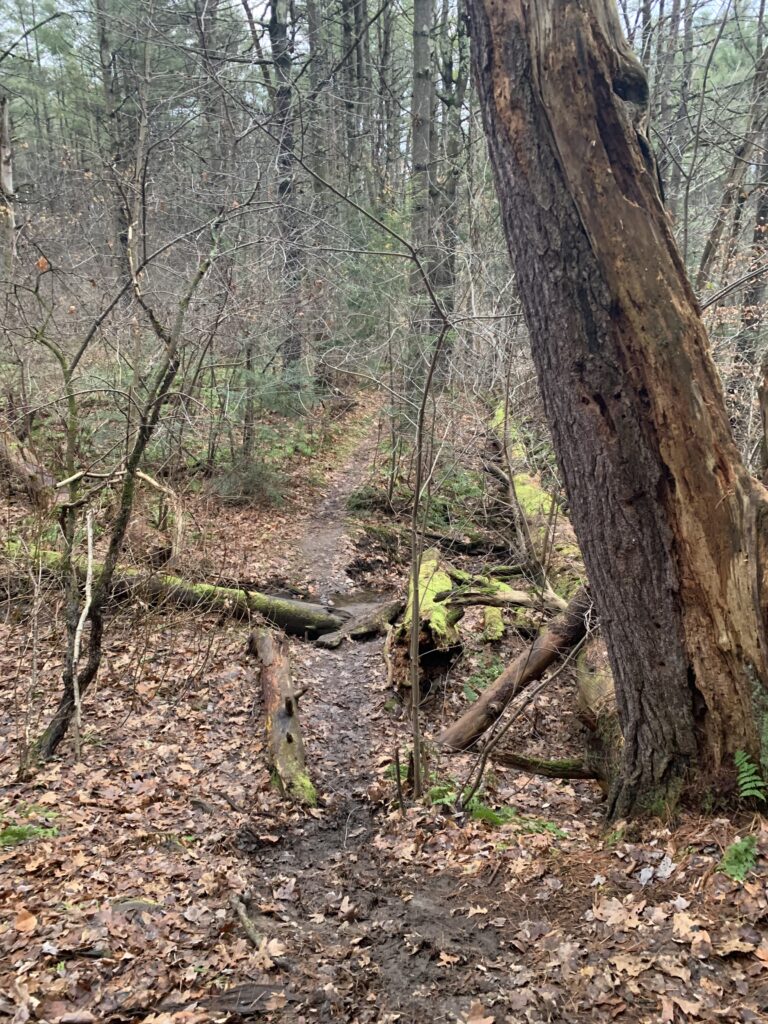
Most notably, the vegetation is no longer colorful– the only colors to see were brown and some pockets of green. Aside from the evergreen Eastern White Pines and Eastern Hemlocks, the only tree to retain leaves was the American Beech. While last time its leaves were bright yellow, they are now all dead and brown. The buckthorns hung on for quite a while, but they are now as bare as the rest of the trees (with the exception of a few remaining black berries).
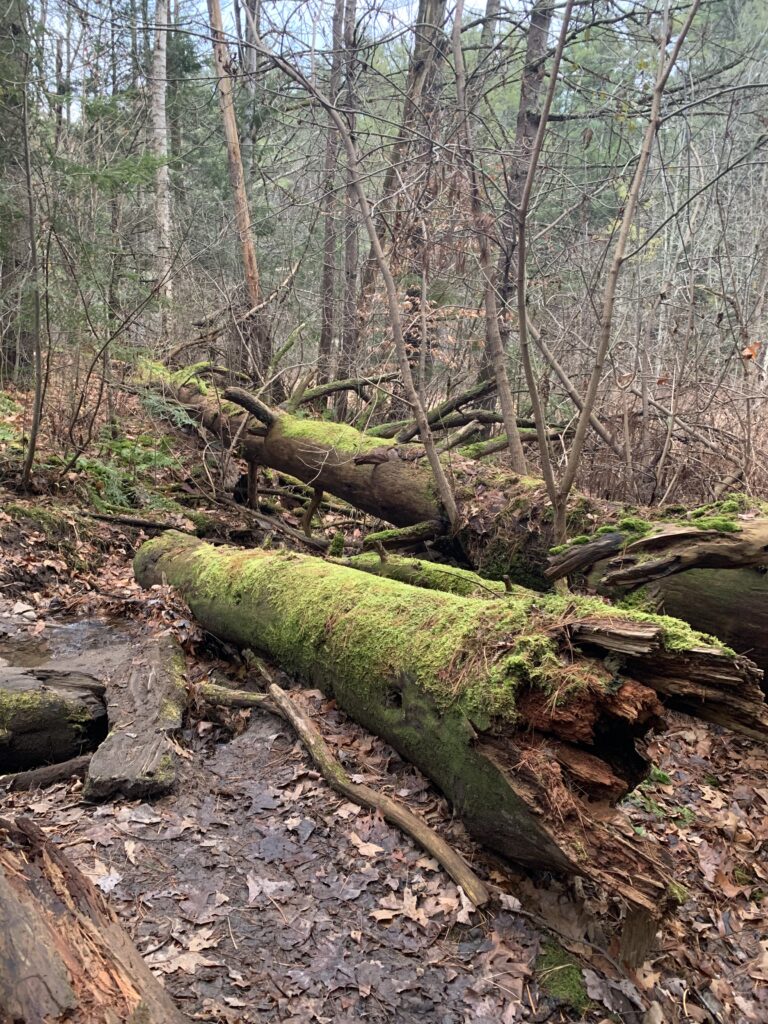
The forest floor is coated with fallen leaves that are now long-dead and beginning to decompose. Due to recent rainfall, they are quite damp and range from brown to black. Many leaves also have holes in them, suggesting decomposer feeding activity.
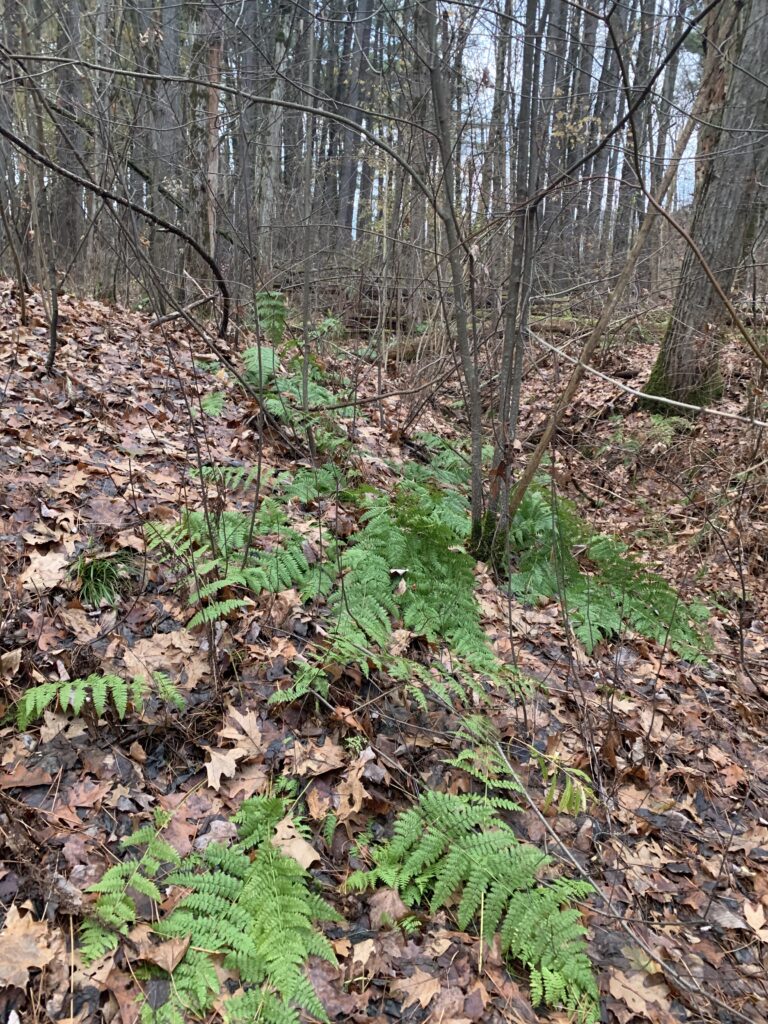
Despite the dense leaf carpet and cold temperatures, many green plants can still be observed. The largest and most obvious are the evergreen wood ferns, but small grasses, white avens, and false ivy are also quite populous, especially close to the stream.
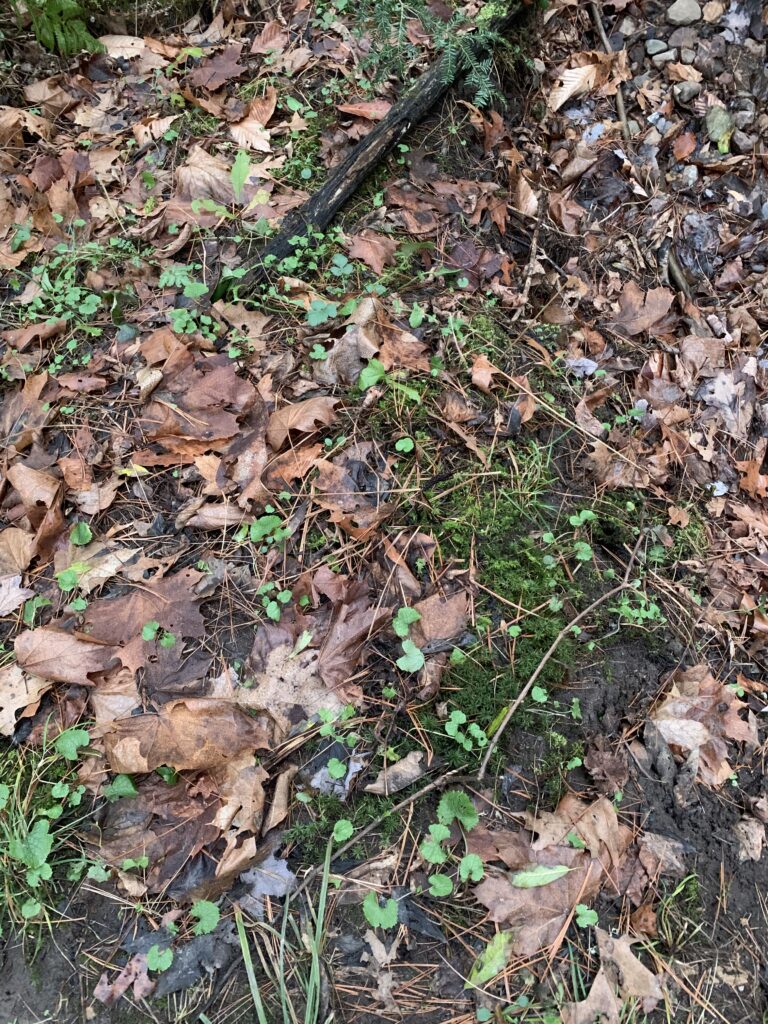
Animal activity seems to generally be on the decline, but I did hear the songs of a Black-Capped Chickadee and two Dark-eyed Juncos. Both these birds spend all year in Vermont, and therefore are quite insulated to protect against freezing temperatures. I also observed quite a few scratches on one of the logs in my spot that I believe might be from some kind of mammal, but I’m not sure!
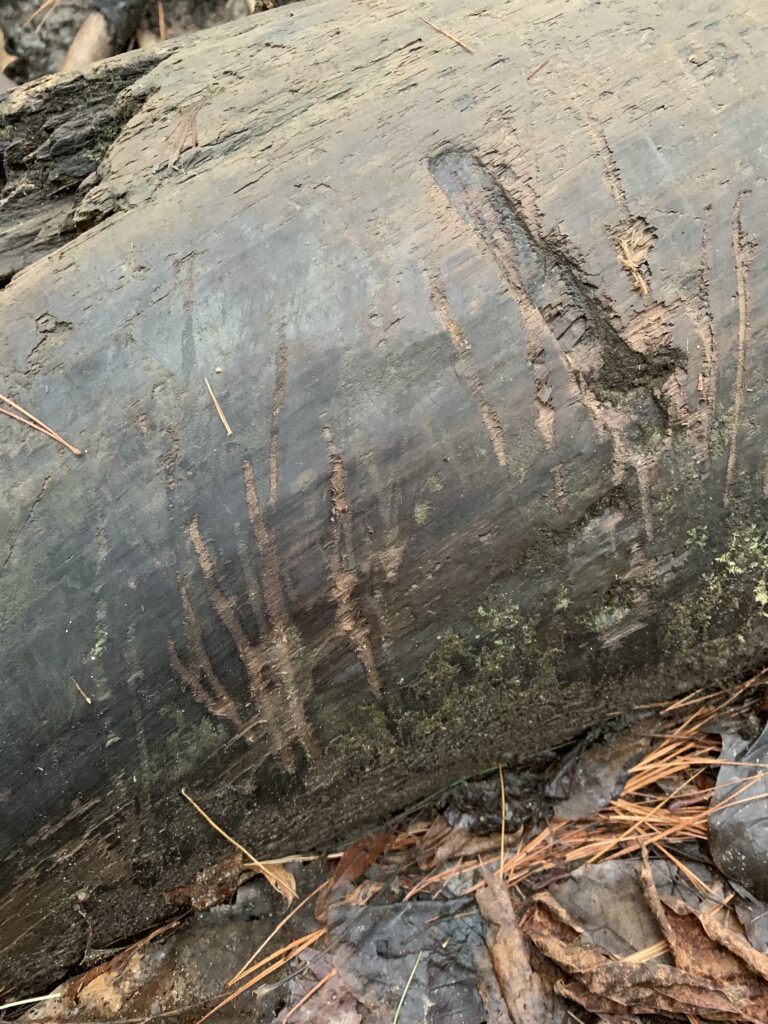
To bring this blog to a close, I want to mention my favorite aspects of my phenology place. My spot is quite unique because it falls on the border of two of Centennial Woods’ ecosystem types: shallow emergent marsh and Northern Hardwood Forest. Because of this, I’ve been able to observe quite a bit of bird activity. Additionally, a stream runs right through the center of my spot, so it is able to support interesting fungi, moss, and amoebas that I might not have observed in a drier location.
